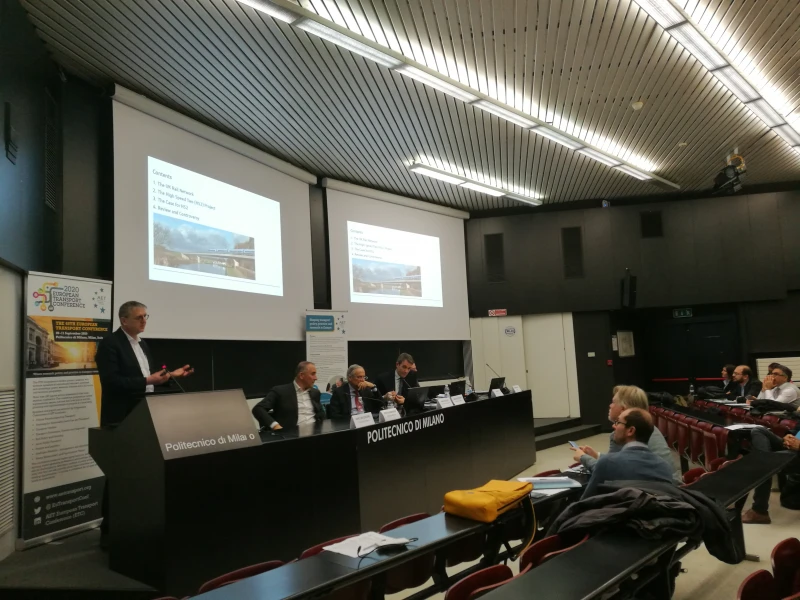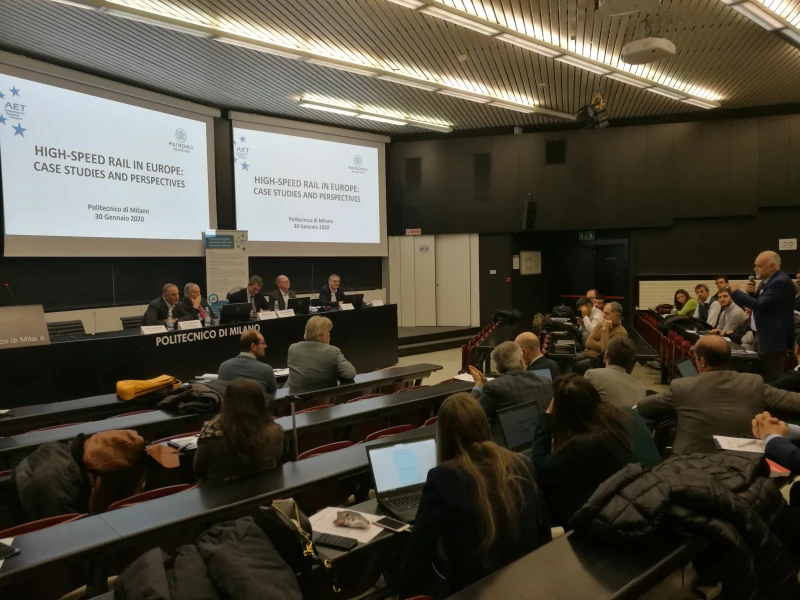-
Past ETC Papers

Browse, search and view papers from the past AET Conferences.
-
Members' Area

AET promotes networking and exchange of ideas, information and opportunities amongst members.
ETC Conference Papers 2010
Glasgow, United Kingdom
ETC Conference Papers 2010
Improving service reliability in urban transit networks
Seminar
Day 1 (11 Oct 2010), Local Public Transport, Operational Advances and System Redevelopment, 11:00 - 13:00
Status
Accepted, documents submitted
Authors
S Tahmasseby, R van Nes, ECORYS Nederland, NL
Short abstract
Given variations happening frequently in transit networks, we take a close look at suitable planning methods to mitigate disturbances and consequently to improve reliability. The focus is on the applicable methods at strategic & tactical planning.
Abstract
Reliability of transit systems has been considered imperative by transit users, operators and the government. Transit systems often fail to provide reliable services due to regular and irregular disturbances, caused by traffic congestion, varying passenger demands, vehicle breakdown or failure of equipment or infrastructure, and incidents. Unreliability in transit services leads to uncertainty and consequent delays aggravating inconveniences for the passengers. Transit reliability has thereby become an increasingly important attribute for public transport network design as well as assessing the performance of transit networks.
Designing public transport networks is usually based on a deterministic point of view. All types of input are assumed to be known exactly and to be constant over time. These are clearly unrealistic assumptions since in reality public transport demand and supply vary within time. Variations in the demand and the supply pattern are causes of service performance variations for travellers and operators in transportation networks. Many sources contribute to these variations.
For the demand side, regular variations of travel demand over periods of the day, days of the week, and seasons of the year are sources of uncertainties. For the supply side an implicit requirement in public transport network evaluation studies is that the necessary infrastructure is available with appropriate quality. In reality, however, this is not always the case. Public transport services often share infrastructure with other modes, while in the case of dedicated infrastructure there are often crossings with other traffic. The infrastructure may suffer from the events? impacts. Thus, it is possible that some part of infrastructure is blocked for a while due to an event. The public transport service itself might suffer from failures. Vehicles might breakdown leading to blockades, or personnel might not turn up. Furthermore, public transport services have their own variations in service quality due to variations in driver behaviour, traffic conditions, traffic signals, et cetera.
Regarding the serious impacts of potential disturbances on transit network performance and service quality, operation and design of transit networks concerning reliability have not received sufficient attention in literature especially in network planning levels. This paper demonstrates the relevancy of strategic and tactical levels of transit planning on transit service reliability enhancement.
At the strategic level of planning service lines reconfiguration and planning for the service network redundancy are two influential measures for improving network robustness and thus service reliability.
At the tactical level of design a couple of measures (allocating slack times) can be applied in the timetable planning to improve service reliability in transit networks. The measures increase spare capacity in the timetable of transit services and consequently prevent delay propagation and reduce travel time variability.
In the infrastructure level, planning for the network redundancy by means of additional infrastructures and thereby creating flexibility in service networks enables transit operators to restore service lines using detours and short runs and thus to maintain service operations in case an incident block the lines? right of way. Applying these measures substantially improve service reliability in transit network especially in rail bound networks (LRT, TRAM, METRO).
By applying the aforementioned measures in a real case study for the tram network in city of The Hague in the Netherlands we will demonstrate that the measures that are applied at the tactical and the strategic levels of transit network planning not only enhance transit network robustness, but also facilitate transit operation in case of disturbances in the network and thus improve service reliability and punctuality.
Documents:

Association For
European Transport
Forester House
Doctors Lane
Henley-in-Arden
Warwickshire, UK
B95 5AW
+44 (0) 15 64 793552
VAT number: 710 1866 64
Conference Supporters & Endorsers




Legal Entity
The Association for European Transport is registered as an Association ('vereniging') with the Chamber of Commerce for Haaglanden in The Netherlands under company number 27170096.
Built on Zenario




